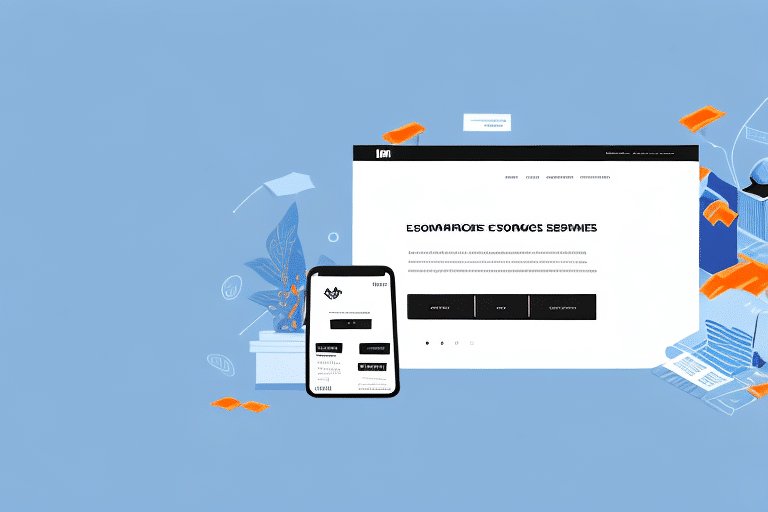Simplifying Returns Management for Your Growing Ecommerce Store
Managing returns effectively is crucial for the success of any ecommerce store. As your business grows, streamlining the returns process can enhance customer satisfaction, build loyalty, and improve your bottom line. This comprehensive guide explores the importance of returns management, common challenges, strategies to simplify the process, and future trends to keep your ecommerce store competitive.
Why Returns Management is Critical for Ecommerce Stores
In the competitive world of ecommerce, providing an exceptional customer experience is paramount. Returns management plays a significant role in achieving this by ensuring that customers can effortlessly return products that do not meet their expectations. A well-executed returns process can:
- Enhance Customer Loyalty: A hassle-free returns process encourages repeat purchases and fosters trust.
- Improve Brand Reputation: Positive return experiences lead to favorable reviews and word-of-mouth referrals.
- Provide Valuable Insights: Analyzing return reasons helps identify product issues and customer preferences.
According to a Statista report, the average return rate in ecommerce is around 20-30%, highlighting the need for effective management strategies.
Common Challenges in Returns Management
Managing returns in an ecommerce environment presents unique challenges that can impact both operational efficiency and customer satisfaction:
- Lack of Visibility: Difficulty tracking returns from initiation to resolution can lead to delays and inefficiencies.
- Identifying Root Causes: Understanding why products are returned is essential for reducing future returns.
- Inventory Management: Restocking returned items requires accurate inventory tracking to prevent overstocking or stockouts.
- International Returns: Handling returns across different countries involves navigating varying customs regulations and shipping logistics.
- High Costs: Expenses related to shipping, restocking, and processing refunds can erode profit margins.
- Customer Satisfaction: A cumbersome returns process can deter customers from making future purchases.
Streamlining the Returns Process
Optimizing the returns process can lead to significant cost savings and improved customer experiences. Here are key strategies to streamline your returns management:
- Clear Return Policies: Develop straightforward and easily accessible return policies to set customer expectations.
- Automated Processing: Implement technology solutions to automate return requests, approvals, and tracking.
- Multiple Return Options: Offer various return methods, such as mail-in, in-store, or drop-off at authorized locations, to enhance convenience.
- Pre-Paid Return Labels: Provide customers with pre-paid labels to simplify the return shipping process and ensure reliable carrier service.
- Integrate with Inventory Systems: Seamlessly connect your returns process with inventory management systems for real-time visibility and efficient restocking.
Utilizing pre-paid return labels not only improves the customer experience but also ensures that returns are handled promptly and accurately.
Leveraging Technology for Efficient Returns Management
Technology plays a pivotal role in simplifying returns management. By adopting the right tools, ecommerce businesses can enhance efficiency and accuracy:
- Automated Returns Software: Reduce manual errors and expedite the returns process with solutions like Returnly or Loop Returns.
- Customer Service Platforms: Use robust customer service software to manage inquiries and track return requests effectively.
- Inventory Management Systems: Tools such as TradeGecko or NetSuite help manage returned inventory and update stock levels in real-time.
- Analytics Tools: Implement analytics software to monitor return trends and identify areas for improvement.
According to a Forbes article, leveraging technology can significantly reduce return processing times and enhance overall operational efficiency.
Best Practices for Effective Returns Management
Adopting industry best practices ensures that your returns management process is both efficient and customer-centric:
- Effective Communication: Keep customers informed at every step of the returns process through email updates and notifications.
- Detailed Product Descriptions: Provide accurate and comprehensive product information to minimize returns due to misaligned expectations.
- Data Tracking: Monitor return data to identify patterns and implement corrective measures for recurring issues.
- Regular Policy Reviews: Periodically assess and update your return policies to ensure they remain clear and effective.
- Offer Incentives: Encourage customers to keep products by offering discounts or free gifts, thereby reducing return rates.
Implementing these best practices can lead to a more streamlined returns process, reduced costs, and enhanced customer satisfaction.
Managing International Returns
Handling returns for international customers introduces additional complexity due to varying regulations and shipping logistics. Here are some tips to manage international returns effectively:
- Localized Return Policies: Tailor your return policies to align with the specific regulations and expectations of each region.
- Understand Customs Requirements: Ensure compliance with customs regulations to prevent delays and additional fees.
- Provide Return Labels: Simplify the return process by offering prepaid international return labels.
- Flexible Return Options: Offer multiple return methods to accommodate the diverse needs of international customers.
Effective management of international returns can enhance your global customer base and expand your market reach.
Measuring and Optimizing Returns Management Performance
To continuously improve your returns management process, it's essential to measure key performance indicators (KPIs) and make data-driven decisions:
- Customer Satisfaction Rating: Assess customer feedback to gauge the effectiveness of your returns process.
- Return Rate: Monitor the frequency of returns to identify trends and potential issues with specific products.
- Processing Time: Track the average time taken to process returns and aim to reduce delays.
- Cost of Returns: Calculate the expenses associated with returns relative to product pricing to manage profitability.
Using analytics tools to monitor these KPIs enables you to identify areas for improvement and optimize your returns management strategy effectively.
Future Trends in Returns Management
The landscape of returns management is evolving with advancements in technology and changing consumer expectations. Anticipating future trends can help your ecommerce store stay ahead of the curve:
- Increased Automation: Automation will continue to play a significant role in streamlining returns processing and reducing manual intervention.
- Enhanced Personalization: Personalized return experiences based on customer behavior and preferences will become standard.
- Sustainable Returns Practices: Eco-friendly return solutions, such as recycling and refurbishing returned products, will gain prominence.
- Improved Data Analytics: Advanced analytics will provide deeper insights into return patterns, enabling more strategic decision-making.
Embracing these trends will ensure that your returns management process remains efficient, customer-focused, and aligned with industry standards.
Conclusion
Effective returns management is a cornerstone of a successful ecommerce business. By understanding its importance, addressing common challenges, leveraging technology, and adopting best practices, you can create a seamless returns experience for your customers. Additionally, staying informed about future trends will help you maintain a competitive edge in the ever-evolving ecommerce landscape. Prioritizing transparent, efficient, and customer-centric returns processes will not only enhance customer satisfaction but also drive long-term growth and profitability for your ecommerce store.






















